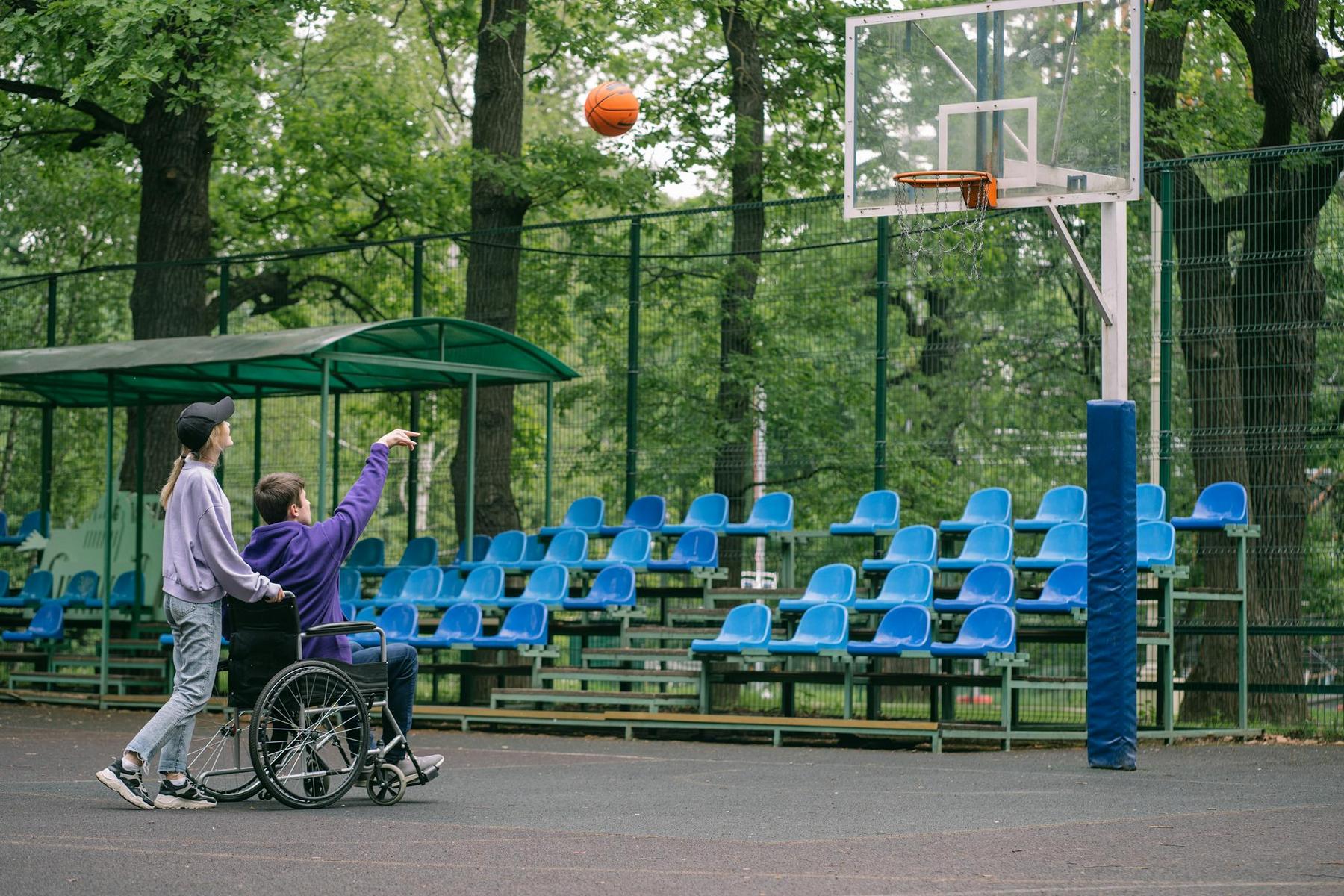When you’re living with a disability, the right assistive technology can transform your world—from simple everyday tasks to meaningful participation in your community. Yet navigating the NDIS to secure funding for the equipment you need can feel overwhelming. Perhaps you’ve wondered whether that communication device will be approved, or if the powered wheelchair you need falls within funding guidelines. You’re not alone in these questions. With approximately 80% of NDIS participants having assistive technology funding included in their plans, understanding what’s covered and how to apply successfully is crucial to accessing the support that can genuinely change your daily life.
Whether you’re in Cairns, Brisbane, or anywhere across Queensland, this comprehensive guide will walk you through everything you need to know about assistive technology funding through the NDIS—from understanding what qualifies to successfully navigating the application process.
What Assistive Technology Can the NDIS Actually Fund?
The NDIS defines assistive technology as equipment, technology, or devices that help you perform tasks you cannot do because of your disability. This definition is broader than many people realise—assistive technology doesn’t need to be electronic or high-tech to qualify for funding.
Supported assistive technology includes:
- Personal mobility equipment such as wheelchairs, walkers, scooters, and transfer aids
- Communication devices including speech-generating devices, tablets with AAC (Augmentative and Alternative Communication) apps, and communication boards
- Self-care products like modified clothing, continence management supplies, and adaptive washing aids
- Household assistance items such as adapted cutlery, one-handed cutting boards, and talking kitchen scales
- Vision and hearing equipment including magnifiers, screen readers, Braille displays, and specialist hearing supports
- Home modifications like ramps, handrails, widened doorways, and bathroom adaptations
- Pressure care devices such as pressure relief mattresses and cushions
- Vehicle modifications for wheelchair accessibility and specialised seating
- Environmental control systems including smart home technology and voice-activated controls
- Prosthetics and orthotics such as custom-made artificial limbs and supportive braces
What the NDIS won’t fund:
The scheme has clear boundaries around what doesn’t qualify for assistive technology funding. Items not covered include standard smartphones and tablets (unless approved as replacement supports), internet connections, gaming consoles, mainstream technology without disability-specific modifications, and equipment that should be funded by other services like health or education systems.
Understanding this distinction is critical. The technology you’re seeking must directly address a functional limitation caused by your disability, not simply be a general lifestyle preference.
How Do You Know If Your Assistive Technology Meets the ‘Reasonable and Necessary’ Criteria?
Every piece of assistive technology funded through the NDIS must meet the “reasonable and necessary” standard. This isn’t arbitrary—it’s a specific framework designed to ensure funding goes towards supports that genuinely make a difference.
Your assistive technology request must demonstrate that:
- It directly relates to your disability – The technology must help you perform tasks you cannot do without it, or enable you to complete activities more easily, safely, or independently.
- It aligns with your NDIS plan goals – The equipment must support the specific objectives outlined in your plan.
- It represents value for money – The option you’ve chosen should be comparable to alternatives that achieve the same outcome.
- It’s safe and effective – The technology must be appropriate for your unique needs and functional limitations.
- It’s not funded elsewhere – Responsibility for funding must lie with the NDIS, not with Medicare, DVA, education systems, or other government bodies.
As you consider your assistive technology needs, ask yourself these essential questions: Is the item on the list of NDIS supports? How does this technology specifically relate to my disability? Is it the right fit for my unique circumstances? Does it help me achieve my goals and address my daily support needs? Will it require repairs or maintenance, and how long will it realistically last?
These questions aren’t just formalities—they form the foundation of a successful funding application. “To qualify for NDIS assistive technology funding, you must demonstrate not just need, but how the technology creates genuine independence and participation opportunities that wouldn’t otherwise exist.”
What Are the Three Funding Levels for NDIS Assistive Technology?
The NDIS categorises assistive technology into three distinct cost tiers, each with different funding processes and evidence requirements. Understanding these levels is fundamental to knowing how to proceed with your application.
Comparing NDIS Assistive Technology Funding Levels
| Funding Level | Cost Range | Evidence Required | Approval Process | Typical Timeline | Budget Category |
|---|---|---|---|---|---|
| Level 1 (Low-Cost) | Under $1,500 per item | None—no quotes required | Purchase flexibly without pre-approval; claim with receipts | Immediate | Core Supports (Consumables) |
| Level 2 (Standard) | $1,500–$15,000 per item | Written evidence from qualified AT advisor | Automatic approval if proper evidence submitted | 28 days | Capital Supports |
| Level 3/4 (High-Cost) | Over $15,000 per item | Comprehensive assessment + formal quote | Detailed review process; stated in plan | Up to 50 days | Capital Supports |
Level 1: Low-Cost Assistive Technology
Low-cost items under $1,500 are the most straightforward to access. These are typically low-risk, easy-to-use products available from retail stores or online that require minimal setup. Examples include non-slip bathmats, walking sticks, shower chairs, reacher tools, adaptive utensils, and basic communication boards.
The beauty of Level 1 funding is its flexibility—you can purchase these items without pre-approval and simply claim reimbursement using receipts through the myplace portal. This puts practical, everyday supports directly in your hands when you need them most.
Level 2: Standard Assistive Technology
Mid-range items between $1,500 and $15,000 require more structure. These supports are more complex or specialised, may need customisation, and involve moderate risk requiring professional setup or training. Examples include powered wheelchairs, standing hoists, customised shower chairs, alternative communication devices, and pressure care mattresses.
For Level 2 funding, written evidence from a qualified assistive technology advisor is essential. This might be an occupational therapist, physiotherapist, speech pathologist, or rehabilitation engineer. The significant change in recent guidelines is that the NDIS will automatically approve up to $15,000 if proper evidence is submitted—previously, this threshold was only $5,000.
Level 3/4: High-Cost Assistive Technology
Equipment exceeding $15,000 falls into the high-cost category, encompassing complex, specialised, or custom-made equipment with significant risk if used improperly. These items—such as custom-made wheelchairs with integrated controls, advanced prosthetics, ventilators, complex home modifications, and ceiling-mounted hoists—require professional installation and comprehensive training.
High-cost assistive technology demands both a detailed assessment from a qualified advisor and a formal quote from an NDIS-registered provider. In many cases, you’ll need evidence of a successful trial period before purchase approval. These items are listed as “stated supports” in your plan, meaning only the specific item or model listed can be purchased.
How Do You Apply for Assistive Technology Funding Through the NDIS?
Successfully applying for assistive technology funding through the NDIS follows a structured pathway. Understanding each step increases your likelihood of approval and reduces delays.
Step 1: Identify Your Specific Needs
Begin by working with your support coordinator, occupational therapist, or other allied health professional to assess which daily activities would benefit from assistive technology. Consider what tasks you cannot perform without assistance, or what would become easier, safer, or more independent with technological support. Critically, ensure these needs align with the goals outlined in your NDIS plan.
Step 2: Arrange Professional Assessment
For mid- to high-cost items, engage a qualified assistive technology assessor. If assistive technology is included in your plan, you must have at least $500 in your Capacity Building budget specifically for seeking independent advice about assistive technology requirements. This funding covers assessments, consultations with advisors, equipment trial periods, and training in use.
Step 3: Gather Comprehensive Evidence
Documentation requirements vary by funding level. For low-cost items under $1,500, no formal documentation is needed—simply purchase and provide receipts. For mid-cost items ($1,500–$15,000), you’ll need a written report from your qualified advisor outlining the item, how it will assist you, why it represents best value for money, and how it meets reasonable and necessary criteria. For high-cost items over $15,000, expect to provide a formal assessment including functional needs analysis, detailed justification, value for money analysis, risk assessment, and trial evidence where applicable.
Step 4: Obtain Quotes from Registered Providers
For mid- and high-cost assistive technology, contact NDIS-registered providers for quotes. Multiple quotes are recommended for comparison, and your therapist can assist with sourcing appropriate options. Remember that providers must be NDIS-registered to process your funding.
Step 5: Submit Your Application
Compile all documentation—assessment reports, quotes, and supporting evidence—and submit through your plan manager (if plan-managed), support coordinator, or directly to the NDIA via the myplace portal. Expected decision timelines are immediate for low-cost items, 28 days for mid-cost equipment, and up to 50 days for high-cost technology.
Step 6: Navigate Approval and Service Booking
Once approved, the NDIA confirms funding through the myplace portal. For high-cost items, a service booking is automatically created, and you’ll receive notification to proceed.
Step 7: Purchase and Delivery
After approval, contact your provider for an invoice. For high-cost custom items, you may need to pay a deposit before manufacturing begins. Delivery timeframes vary significantly—particularly relevant for regional participants in Cairns and other parts of Queensland, where equipment may need to travel from southern providers. The NDIS can fund equipment hire whilst you’re waiting for custom-made items to be manufactured, ensuring you’re not left without support during production periods.
Step 8: Setup, Installation, and Training
Coordinate delivery with your provider, arrange professional setup if required, and receive comprehensive training on proper use and maintenance. Document any issues or maintenance needs from the outset—this information becomes valuable for future plan reviews.
What Support Options Are Available When Managing Your NDIS Assistive Technology Budget?
How you manage your NDIS funding impacts your flexibility in choosing assistive technology providers and equipment. Three management options are available, each with distinct advantages.
Self-Managed
With self-management, you or your representative manages funds directly. This option provides maximum flexibility—you can purchase from registered or unregistered providers, and no price limits apply to your purchases. However, you’re responsible for all invoicing, record-keeping, and claiming through the myplace portal. This approach suits participants who want complete control and have the capacity to manage administrative tasks.
Plan-Managed
Plan management involves a registered plan manager handling payments and record-keeping on your behalf. You retain flexibility in choosing providers (both registered and unregistered), but administration becomes significantly easier. Your plan manager maintains financial records, processes invoices, and ensures compliance. This option strikes a balance between flexibility and support—particularly valuable when navigating assistive technology purchases.
NDIA-Managed (Agency-Managed)
Under NDIA management, the National Disability Insurance Agency manages your funds directly. You can only use NDIS-registered providers and must comply with NDIS pricing arrangements and price limits. Whilst this offers less flexibility, it provides greater oversight and eliminates administrative burden. You can view all claims through the myplace portal.
Regional Considerations for Queensland Participants
If you’re accessing NDIS services in Cairns, Brisbane, or regional Queensland, additional considerations may affect your assistive technology journey. Regional participants may experience longer delivery times for custom-made equipment from southern providers, potentially requiring budget allocation for hire equipment during manufacturing periods. Access to specialised assistive technology assessors might be more limited, though support coordinators can assist with arranging assessments. Transport to appointments for equipment trials or fittings may also require budgeting within your plan.
Planning for Maintenance and Long-Term Support
One aspect frequently overlooked in assistive technology funding is ongoing maintenance. The NDIS can fund repair and maintenance of assistive technology as reasonable and necessary supports—but this doesn’t happen automatically.
For equipment costing over $1,500, the NDIA can include maintenance funding in your Capital-AT budget. However, you must specifically request this during plan meetings—it’s not automatically assumed. For equipment under $1,500, minor repairs can be claimed as low-cost assistive technology from your Core-Consumables budget.
What’s explicitly not covered are repairs covered by manufacturer or supplier warranties. These must be pursued directly with your supplier under Australian Consumer Law and aren’t considered reasonable and necessary by the NDIS.
During planning meetings, proactively ask about maintenance costs, budget for ongoing servicing and potential emergency repairs, understand warranty coverage and expected equipment lifespan, and maintain detailed documentation of all repairs and maintenance for future plan reviews.
Moving Forward with Confidence
Navigating assistive technology funding through the NDIS requires understanding, preparation, and often professional guidance—but the outcome can be genuinely life-changing. When the right technology meets your needs, independence expands, safety improves, and participation in community life becomes more achievable.
The key to success lies in thorough preparation: Start discussions about your assistive technology needs early, involve qualified professionals in assessments for mid- and high-cost items, maintain comprehensive documentation of all receipts, quotes, and reports, never purchase high-risk or mid-cost equipment before NDIS approval, and actively participate in plan reviews to ensure your evolving needs are met.
Remember that assistive technology isn’t a one-time consideration—as your circumstances change, your technology needs may evolve. Regular engagement with your support team, honest communication about what’s working and what isn’t, and proactive planning during review periods ensure your assistive technology continues serving your independence and participation goals effectively.
Can I purchase assistive technology before getting NDIS approval?
For low-cost items under $1,500, yes—you can purchase flexibly and claim reimbursement with receipts. However, for mid-cost ($1,500–$15,000) and high-cost (over $15,000) assistive technology, you must never purchase before receiving NDIS approval. Purchasing before approval, particularly for higher-risk equipment, will result in your claim being declined and you’ll be personally responsible for the cost.
What happens if the assistive technology I need isn’t on the NDIS support list?
In specific circumstances, the NDIS can fund items not typically on the support list through “replacement supports.” These must replace existing funded supports in your plan—they’re not additional funding. Replacement supports might include standard household items like washing machines, smart watches, tablets, or smartphones. A critical requirement is that you must obtain written approval from the NDIS before purchasing replacement supports, and invoices must be dated after approval is granted, or claims will be declined.
How long does assistive technology funding approval take in Queensland?
Approval timelines vary by funding level: low-cost items under $1,500 are approved immediately at purchase; standard assistive technology between $1,500–$15,000 typically takes 28 days for decision-making; high-cost equipment over $15,000 can take up to 50 days for comprehensive review. Regional factors may also affect equipment delivery times, especially for custom-made items.
Who can provide the professional assessment required for assistive technology funding?
Qualified assistive technology assessors include occupational therapists, physiotherapists, speech pathologists, rehabilitation engineers, continence nurses, and other allied health practitioners with relevant expertise. Your support coordinator can also assist you in connecting with the appropriate professional.
Will the NDIS fund maintenance and repairs for my assistive technology?
Yes, the NDIS can fund maintenance and repairs as reasonable and necessary supports—but only if they are specifically requested and included in your plan. For items over $1,500, be sure to ask for maintenance funding during your planning meeting. Repairs that are covered under manufacturer or supplier warranties are not funded by the NDIS and should be handled directly with the supplier.



